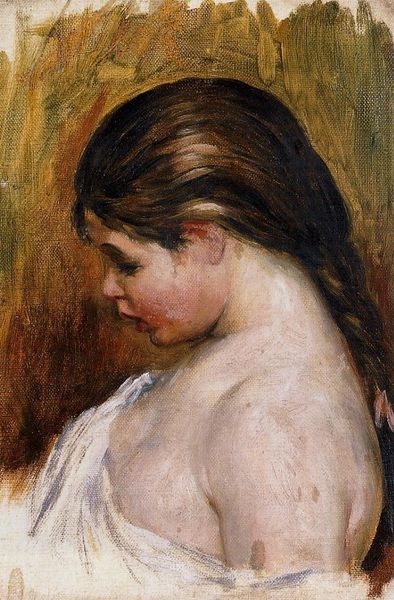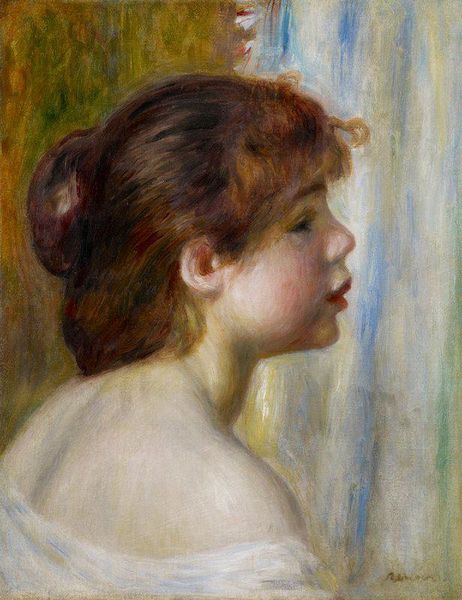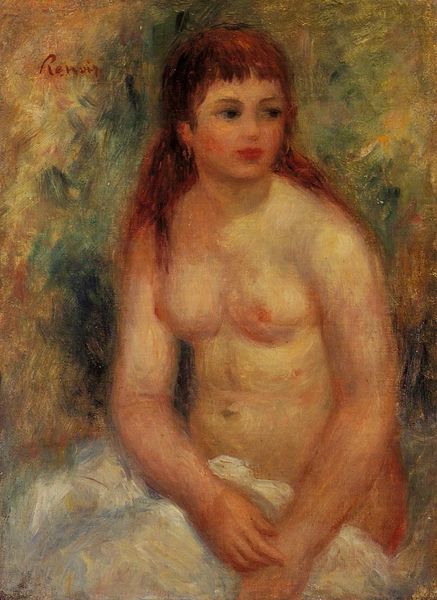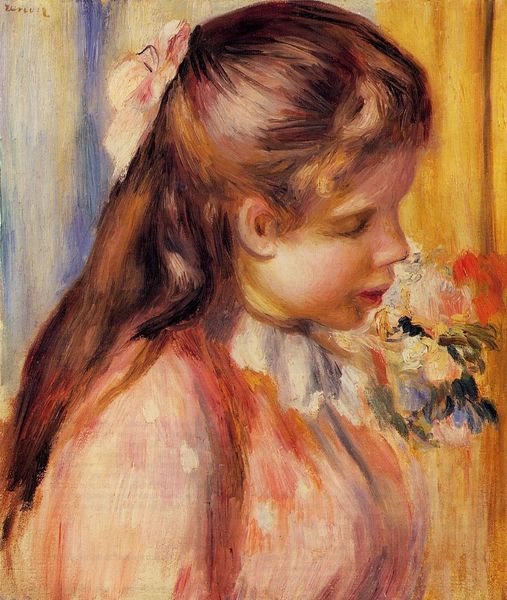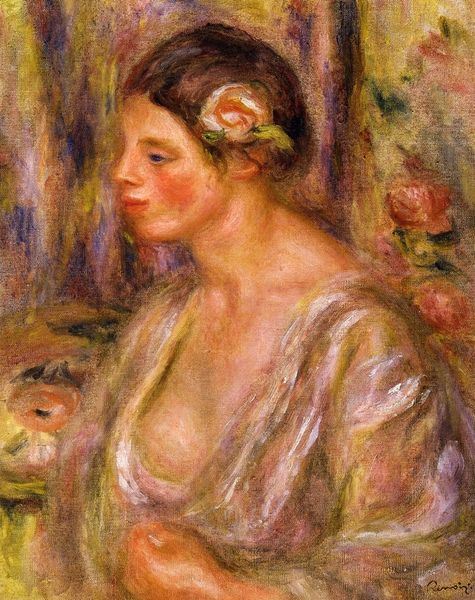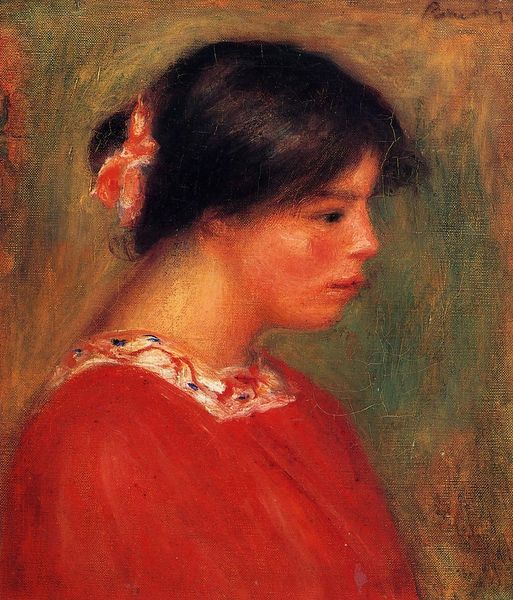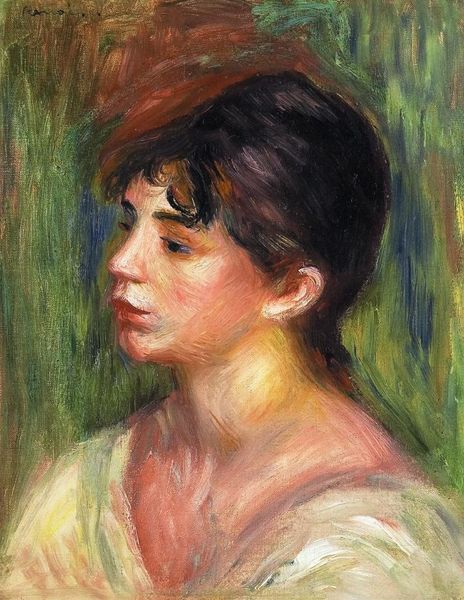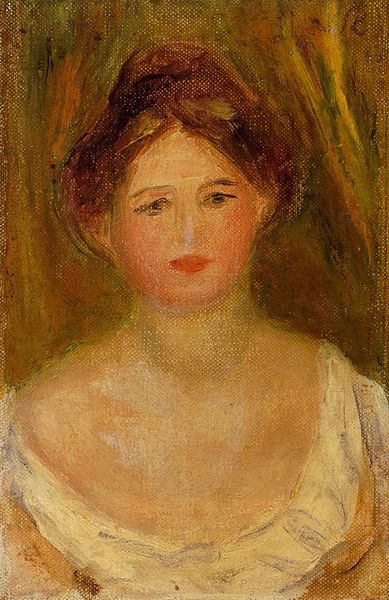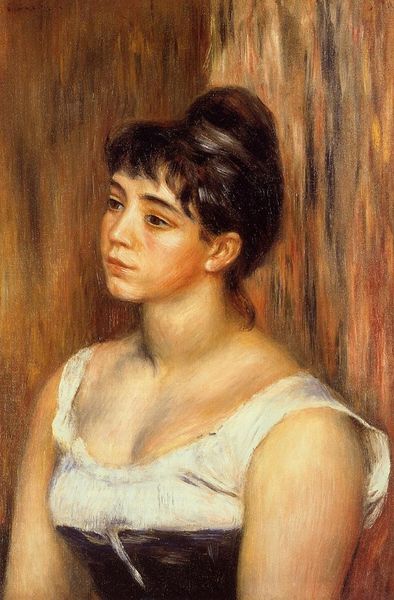
Copyright: Public domain
Editor: This is Pierre-Auguste Renoir's "Bust of a Young Woman with Flowered Ear," painted in 1898. It's an oil painting. I’m immediately drawn to the way the light dances across her skin, it's really beautiful! What are your thoughts, and how do you approach a painting like this? Curator: Note how Renoir has deconstructed the contours of the figure. There is a softening, an almost dissolving, of form into light and color. Focus on the impasto technique; thick strokes build up texture. Do you observe how the brushstrokes function almost independently of the subject? Editor: I see what you mean. The brushstrokes in the background especially—they’re very free and don't seem to directly describe anything, unlike, say, her hair where you can still tell it's hair. What is the effect of using the brushstrokes like this? Curator: It's a strategic dissolving of objective reality in favor of subjective perception. Notice how color modulation shapes form here. Flesh tones aren’t just “skin-colored"; there's a spectrum ranging from soft pinks to pale blues and even touches of green that shape the contours of the model. This chromatic complexity suggests a very keen and nuanced vision. It focuses the viewer on pure form and visuality and it makes one wonder where does form truly come from: observation or expression? Editor: So it is almost like Renoir is trying to find new visual components using light, form and the relationship between them? The way he uses these new visual components invites me to rethink and recreate these relations myself. Curator: Precisely. It challenges traditional representation in favour of a more sensory experience of form. Did we learn that sometimes it’s the deconstruction and analysis of familiar concepts that may provide novel outcomes? Editor: I did! It will completely reshape how I engage with art in the future. Thank you for your time and help with my interpretation of this masterpiece.
Comments
No comments
Be the first to comment and join the conversation on the ultimate creative platform.

